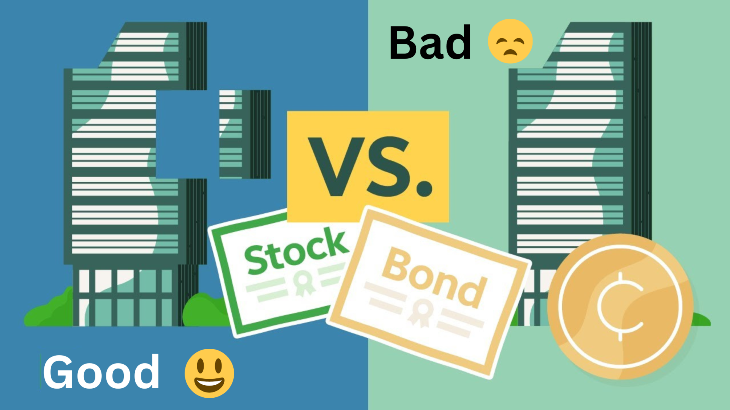
In most personal finance books I have read, the experts suggest a constant rebalancing of a portfolio, shifting from stocks to bonds as we get older.
I think that’s the dumbest idea I have ever read.
There are two main reasons why rebalancing is such a prevalent idea:
- Financial advisers need to cover their asses when the market goes down.
- People, in general, are more afraid to see their portfolio going down than happy when it goes up. The pain is bigger than pleasure.
The objectives of the client
When people invest, their main purpose is to make money. When they go to a financial adviser and they tell the adviser: I want a low-risk investment, what they are really telling the adviser is: “I don’t want too much volatility.”
The risk element of 100% stock

A portfolio composed of 100% stocks is more volatile but it is NOT riskier. There has never been a 20 year time period in history in which the stock market has lost money.
What’s inside a portfolio

Most mutual funds are composed of either stocks or bonds. Few are a combination of stocks and funds and cash.
I believe that hold ding cash in a mutual fund is a dumb idea. Many of these mutual fund charge fees in excess of 2.5%.
Not too long ago I saw a mutual fund with these holdings: Stocks 60%, Bonds 35%, Cash 15%. The client (my friend ) was paying the mutual fund manager a 2.5% fee for holding his savings in cash. My friend can put his money under his mattress for free. Please read your prospectus and make sure you are not paying management fees to have cash in your mutual fund.
What is Rebalancing?
Some experts, including many who I respect and admire, suggest that you should always have a certain percentage of bonds and stocks in your portfolio. The purpose of this rebalancing is to diminish volatility and risk.
But the evidence is quite clear, the more bonds you have, the less money you will make.
Why rebalancing doesn’t make sense
Rebalancing doesn’t make sense because you want your portfolio to continue performing until your last day of life. Then, you will have something left over for the next generation.
What the other experts are saying
Warren Buffett has instructed his trustee to invest the money left to his wife this way: 90% in stocks (he specifies low-cost S&P 500 index) and 10% short-term government bonds. Assuming a $1 million dollar portfolio his wife will get $1,000 from the government bonds and $72,000 from stocks for a total of $73,000. Warren Buffett is 85 years old; assuming that his wife is a similar age, his action totally contradicts John Bogle’s advice.
How I manage my portfolio
My portfolio is 100% stocks: 33% Canadian, 33% US., and 34% International and Emerging Markets.
How do I deal with the volatility? By playing a mental game. I think that the market will give me 8% return in the long run, but I make my retirement calculations based on a 6% rate of return. When I make more than 6%, I don’t consider that money as mine, I consider it as cushion money for when the market goes down.
Something else that helps me endure market volatility is that I always keep a one-year emergency fund. In a down market, I don’t need to make any withdrawals to sustain my cost of living.

Comments
2 responses to “Why having bonds in your portfolio is dumb”
That’s all fine if you have a 20+ year horizon. What will you recommend for some one who is close to the withdrawal phase? You don’t seem concerned about the sequence of returns risk.
Yes, if you have less than 20 year investment horizon, you are too late. Your main goal is to survive with what you have. Maybe, if a person has one or two years emergency fund, I would be inclined to be 100% stocks and on any down years, take advantage of that emergency fund.
I hope to bring this conversation to people starting out or midway. If you take a look at my hypothetical example where some one is investing in their TFSA, the difference is huge if they have 100% stocks vs if they have a 40-60 portfolio. with a 100% portfolio, the investor can afford to have three consecutive -25% years and still be better off than the 40-60 portfolio.
This reminds me of some insurance product whereas the insurance price is more costly than the product it’s trying to insure.
We are indoctrinated to start investing in bonds when we are as young as 20 years old. If at 20 years you have 20% in bonds, you are not adding one bit of security to your portfolio, all you are doing is reducing volatility (at a great price) and at the same time you are dramatically reducing your income potential. At 30 you have 30% in bonds and at 60 you have no choice but to put 60% into bonds because you have been handicapped for all your life.
Personally, if I was 60 ( I am 48 now), I would at least try to put together one year emergency fund and go 100% into stocks.